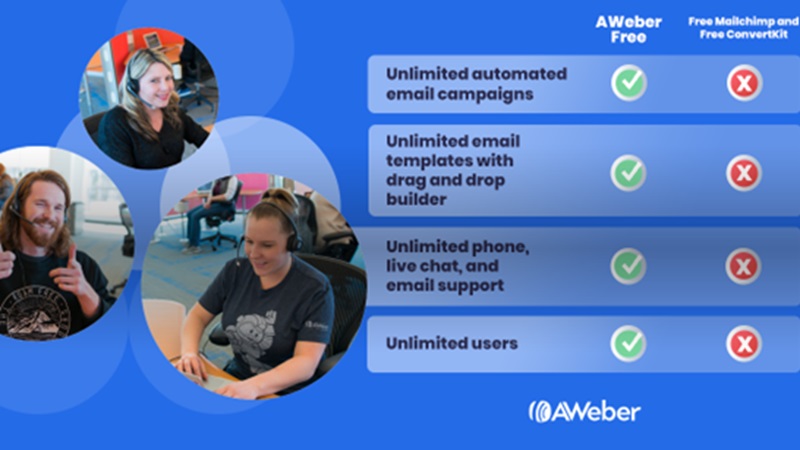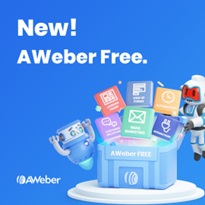E-mail marketing is still one of the most powerful tools for small businesses to connect with their audience, build relationships, and drive sales.
With the right strategies and tools, e-mail marketing can offer a high return on investment (ROI), making it an essential part of any small business’s marketing plan.
This comprehensive guide will explore e-mail marketing’s importance for small businesses, provide tailored strategies to maximize success, and recommend the best tools to help you get started.
The Importance of E-mail Marketing for Small Businesses
E-mail marketing is a cost-effective way for small businesses to reach a large audience.
Unlike other forms of marketing, such as social media or pay-per-click advertising, e-mail marketing allows you to communicate directly with your customers and prospects in a personal and targeted manner.
Here are some reasons why e-mail marketing is particularly important for small businesses:
- Cost-Effective Marketing
For small businesses with limited marketing budgets, e-mail marketing offers an affordable way to reach customers. With low costs associated with sending e-mails and the ability to scale campaigns, e-mail marketing provides a high ROI. Many e-mail marketing platforms offer free or low-cost plans, making it accessible to businesses of all sizes.
- Direct Communication with Customers
E-mail marketing allows small businesses to communicate directly with their customers, providing a more personal touch than other marketing channels. By sending targeted e-mails based on customer behavior, preferences, and purchase history, you can build stronger relationships and encourage repeat business.
- Measurable Results
One of the biggest advantages of e-mail marketing is the ability to track and measure the results of your campaigns. Most e-mail marketing platforms provide detailed analytics, allowing you to see open rates, click-through rates, conversion rates, and more. This data helps you understand what works and what doesn’t, enabling you to refine your strategies over time.
- High ROI
E-mail marketing consistently delivers one of the highest ROI among digital marketing channels. According to various studies, the average ROI for e-mail marketing is $42 for every $1 spent. This makes it an incredibly effective way to generate leads, drive sales, and grow your business.
- Builds Brand Awareness
Regularly sending e-mails to your customers helps keep your brand top of mind. Whether you’re promoting new products, sharing company news, or offering special discounts, e-mail marketing helps maintain brand awareness and keeps customers engaged with your business.
Tailored E-mail Marketing Strategies for Small Businesses
To make the most of e-mail marketing, small businesses need to implement strategies tailored to their unique needs and goals.
Here are some key strategies to help you maximize the effectiveness of your e-mail marketing efforts:
-
Build and Segment Your E-mail List
Your e-mail list is the foundation of your e-mail marketing efforts. Building a high-quality e-mail list should be a priority for every small business. Here’s how you can do it:
- Use Sign-Up Forms: Place e-mail sign-up forms on your website, blog, and social media pages. Make it easy for visitors to subscribe by offering incentives such as discounts, free trials, or exclusive content.
- Leverage In-Store Opportunities: If you have a physical store, encourage customers to sign up for your e-mail list at the point of sale. You can offer them a discount on their next purchase as an incentive.
- Segment Your List: Segmentation allows you to divide your e-mail list into smaller, more targeted groups based on factors such as demographics, purchase history, and engagement levels. This enables you to send more relevant and personalized e-mails, which can significantly improve open and click-through rates.
The content of your e-mails plays a crucial role in the success of your campaigns. Here are some tips for creating content that resonates with your audience:
- Personalization: Personalize your e-mails by addressing recipients by their first name and tailoring the content based on their preferences and behavior. Personalized e-mails are more likely to be opened and acted upon.
- Compelling Subject Lines: Your subject line is the first thing recipients see, so make it count. Craft subject lines that are concise, intriguing, and relevant to the content of your e-mail. Avoid using spammy language or excessive punctuation.
- Value-Driven Content: Focus on providing value to your subscribers. Whether it’s educational content, special offers, or insider news, ensure that your e-mails offer something valuable that will keep your audience engaged.
- Visual Appeal: Use high-quality images and a clean, professional design to make your e-mails visually appealing. However, be mindful of not overloading your e-mails with images, as this can affect load times and deliverability.
-
Automate Your E-mail Campaigns
Automation can save you time and ensure that your e-mails are sent at the right time to the right people. Here are some types of automated e-mails that can benefit your small business:
- Welcome E-mails: Set up an automated welcome e-mail that is sent to new subscribers immediately after they join your list. This is your opportunity to introduce your brand, set expectations, and offer a special welcome discount or gift.
- Abandoned Cart E-mails: If you run an e-commerce store, automate abandoned cart e-mails to remind customers about the products they left behind. These e-mails can include product images, customer reviews, and a special discount to encourage them to complete their purchase.
- Birthday and Anniversary E-mails: Celebrate your customers’ birthdays and anniversaries by sending them automated e-mails with special offers or gifts. This personal touch can help build loyalty and encourage repeat business.
- Re-Engagement E-mails: Set up automated re-engagement e-mails to win back inactive subscribers. Offer them an incentive, such as a discount or exclusive content, to encourage them to engage with your brand again.
-
Optimize your E-Mail Marketing for Mobile Devices
With the majority of e-mails being opened on mobile devices, it’s essential to ensure that your e-mails are mobile-friendly. Here are some tips for optimizing your e-mails for mobile:
- Responsive Design: Use a responsive e-mail design that automatically adjusts to fit the screen size of the device being used. This ensures that your e-mails look great on both mobile and desktop.
- Short Subject Lines: Keep your subject lines short and to the point so that they are fully visible on mobile screens. Aim for 30-40 characters.
- Simple Layout: Use a simple, single-column layout that is easy to read and navigate on a mobile device. Avoid using too many images or complex design elements that can slow down load times.
- Clear CTAs: Make sure your call-to-action (CTA) buttons are large and easy to tap on a mobile screen. Place them prominently in your e-mails so that recipients can easily take action.
-
Measure and Analyze Your Results
To continuously improve your e-mail marketing efforts, it’s important to track and analyze the performance of your campaigns. Here’s what you should focus on:
- Open Rates: The percentage of recipients who open your e-mails. A low open rate may indicate that your subject lines need improvement or that your e-mails are not being delivered to the inbox.
- Click-Through Rates (CTR): The percentage of recipients who click on a link within your e-mail. A low CTR may suggest that your content or CTA is not compelling enough.
- Conversion Rates: The percentage of recipients who complete the desired action, such as making a purchase or signing up for an event. Tracking conversions helps you understand the effectiveness of your e-mails in driving sales or other key actions.
- Bounce Rates: The percentage of e-mails that could not be delivered to the recipient’s inbox. High bounce rates can harm your sender reputation and affect deliverability.
- Unsubscribe Rates: The percentage of recipients who unsubscribe from your e-mail list. If your unsubscribe rate is high, it may be a sign that your content is not resonating with your audience or that you are sending too many e-mails.
By regularly reviewing these metrics, you can identify areas for improvement and make data-driven decisions to optimize your e-mail marketing strategy.
Recommended E-mail Marketing Tools for Small Businesses
Choosing the right e-mail marketing tools is crucial for implementing and scaling your e-mail marketing efforts. Here are some of the best tools for small businesses, each offering a range of features to suit different needs and budgets:
- Mailchimp
Overview: Mailchimp is one of the most popular e-mail marketing platforms, known for its user-friendly interface and robust features. It offers a free plan that includes basic e-mail marketing tools, making it ideal for small businesses just starting.
Key Features:
- Drag-and-drop e-mail builder
- Pre-built templates
- Audience segmentation
- Basic automation workflows
- Analytics and reporting
- Integration with e-commerce platforms and social media
Pricing: Mailchimp offers a free plan for up to 500 contacts. Paid plans start at $13 per month and offer more advanced features and higher contact limits.
- Constant Contact
Overview: Constant Contact is a powerful e-mail marketing tool designed for small businesses. It offers a wide range of features, including e-mail templates, automation, and social media marketing tools.
Key Features:
- Easy-to-use e-mail editor
- Hundreds of customizable templates
- List segmentation
- E-mail automation
- Event management tools
- Social media integration
Pricing: Constant Contact offers a free trial for 30 days. Paid plans start at $12 per month.
- Sendinblue
Overview: Sendinblue is an all-in-one marketing platform that combines e-mail marketing, SMS marketing, and automation tools. It’s a great choice for small businesses looking for a versatile tool that can handle multiple aspects of digital marketing.
Key Features:
- E-mail and SMS marketing
- Marketing automation
- Transactional e-mails
- Advanced segmentation
- Landing pages and forms
- Real-time analytics
Pricing: Sendinblue offers a free plan with unlimited contacts and up to 300 e-mails per day. Paid plans start at $25 per month.
- MailerLite
Overview: MailerLite is a simple yet powerful e-mail marketing tool that focuses on ease of use and affordability. It’s ideal for small businesses that need essential e-mail marketing features without the complexity of more advanced tools.
Key Features:
- Drag-and-drop e-mail builder
- Customizable templates
- Automation workflows
- A/B testing
- Subscriber segmentation
- Detailed analytics
Pricing: MailerLite offers a free plan for up to 1,000 subscribers and 12,000 e-mails per month. Paid plans start at $10 per month.
- GetResponse
Overview: GetResponse is a comprehensive marketing platform that offers e-mail marketing, automation, and webinar hosting. It’s a great choice for small businesses that want to integrate multiple marketing channels into one platform.
Key Features:
- E-mail marketing and automation
- Webinar hosting and landing pages
- CRM integration
- E-commerce tools
- Advanced segmentation
- Detailed analytics
Pricing: GetResponse offers a free plan for up to 500 contacts. Paid plans start at $19 per month.
Overview: AWeber is an established e-mail marketing platform that is particularly well-suited for small businesses and entrepreneurs. It offers a range of tools for creating and managing e-mail campaigns, with a focus on simplicity and effectiveness.
Key Features:
- Drag-and-drop e-mail builder
- Pre-designed templates
- E-mail automation
- List segmentation
- Detailed reporting
- Integration with popular apps and services
Pricing: AWeber offers a free plan for up to 500 subscribers. Paid plans start at $19.99 per month.
- ConvertKit
Overview: ConvertKit is a popular choice for creators, bloggers, and small business owners who want to build and nurture an engaged audience. It offers powerful automation and segmentation features, making it easy to deliver personalized content to your subscribers.
Key Features:
- Visual automation builder
- Subscriber tagging and segmentation
- Customizable forms and landing pages
- E-commerce integration
- Detailed analytics
- Integration with popular tools and platforms
Pricing: ConvertKit offers a free plan for up to 1,000 subscribers. Paid plans start at $15 per month.
- Moosend
Overview: Moosend is an affordable e-mail marketing platform that offers a wide range of features, including automation, segmentation, and detailed analytics. It’s a great choice for small businesses looking for an effective and budget-friendly solution.
Key Features:
- Drag-and-drop e-mail editor
- Automation workflows
- Advanced segmentation
- A/B testing
- Landing pages and forms
- Real-time analytics
Pricing: Moosend offers a free plan with unlimited e-mails for up to 1,000 subscribers. Paid plans start at $9 per month.
- Omnisend
Overview: Omnisend is an e-mail marketing platform designed specifically for e-commerce businesses. It offers a range of features to help small businesses increase sales through targeted e-mail campaigns, automation, and SMS marketing.
Key Features:
- E-mail and SMS marketing
- Automation workflows
- Product recommendations
- Advanced segmentation
- Landing pages and forms
- Integration with e-commerce platforms
Pricing: Omnisend offers a free plan with limited features. Paid plans start at $16 per month.
- Benchmark Email
Overview: Benchmark Email is a user-friendly e-mail marketing platform that offers a range of features to help small businesses create and manage e-mail campaigns. It’s known for its clean design and ease of use.
Key Features:
- Drag-and-drop e-mail builder
- Customizable templates
- Automation workflows
- Subscriber segmentation
- A/B testing
- Detailed reporting
Pricing: Benchmark Email offers a free plan with basic features. Paid plans start at $13 per month.
Conclusion: E-Mail Marketing for Small Businesses
E-mail marketing is a powerful tool for small businesses looking to connect with their audience, build relationships, and drive sales. By implementing tailored strategies such as building and segmenting your e-mail list, creating compelling content, automating your campaigns, optimizing for mobile, and measuring your results, you can maximize the effectiveness of your e-mail marketing efforts.
Choosing the right e-mail marketing tools is also crucial for success. Platforms like Mailchimp, Constant Contact, Sendinblue, and others offer a range of features to suit different needs and budgets, making it easier for small businesses to execute their e-mail marketing strategies effectively.
With the right approach and tools, e-mail marketing can help your small business grow, foster customer loyalty, and achieve long-term success. Whether you’re just starting with e-mail marketing or looking to refine your existing efforts, the strategies and tools outlined in this guide will help you get the most out of your campaigns.











